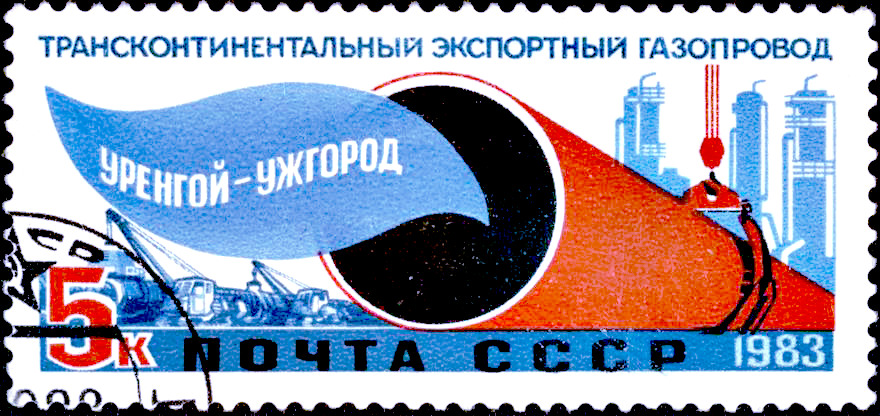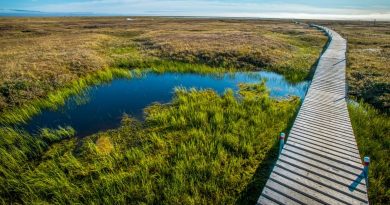Blog: Russia’s Arctic gas is funding the war in Ukraine

In response to Russia’s invasion of Ukraine, the seven other member states of the Arctic Council have hit a “pause” button on cooperation. Gas from the Russian Arctic, however, is continuing to flood into Europe as if nothing ever happened.
The political theatre of halting Arctic Council diplomacy will have little effect on Russia. Yet it will negatively impact circumpolar efforts on environmental, Indigenous, scientific, health, and manner of “soft” issues.” In fact, work in these areas may now be harmed twice over. So long as Arctic states, especially the gas import-dependent EU members Sweden, Denmark, and Finland, still drink the Russian cool-aid while failing to discuss as a region how to mitigate the damage caused by extraction and industry, the Arctic ecosystem will lie in peril.
Post-invasion, Russia is raking in more money from gas exports than before
Two days after Russia’s invasion of Ukraine, Germany froze high-profile pipeline project Nord Stream-2 (whose tangled connections to the Arctic I’ve explored about before). Yet existing gas flows have continued largely unabated from Russian pipelines to Europe, including via the Yamal-Europe pipeline, which runs through Belarus, Poland, and Germany.
In the winter months leading up to the invasion, Gazprom may have been manipulating flows into Europe by withholding gas despite having a record year of both production and profits. Now, post-invasion, fighting is threatening some pipelines and causing explosions, but gas seems to be flowing relatively normally, and neither Russia nor the EU have sought to turn off the taps.
Meanwhile, the price of natural gas imports in Europe continues to rise, sending more money into Russian coffers. European think tank Bruegel estimates that Russia, the world’s largest natural gas exporter, is now raking in 500 million euros each day compared to 200 million a day in February. Polish Prime Minister Mateusz Morawiecki cautioned, “We are buying, as [the] European Union, lots of Russian gas, lots of Russian oil. And President Putin is taking the money from us, from the Europeans. And he is turning this into aggression, invasion.”

Russia’s friends in Asia: China and Mongolia
Europe may be able to significantly lessen its dependence on Russian imports, estimates the think tank, Bruegel. Weighing that eventuality, Russia is looking to export of the commodity sucked out of the tundra eastward. In early February, Vladimir Putin, while meeting with Xi Jinping in China on the eve of the Olympics, announced that their two countries had inked a 30-year deal involving the annual export of 10 billion cubic meters (bcm) per year from eastern Siberia. This agreement builds on the 30-year gas deal signed between the two countries in 2014.
Then, four days after the invasion of Ukraine began—which China allegedly requested to be delayed until the Olympics had concluded—Gazprom’s chairman, Alexey Miller, and the Deputy Prime Minister of Mongolia signed a deal regarding the construction of the Soyuz/Vostok gas pipeline, which will run from Russia through the former Soviet satellite to China. This pipeline will be able to deliver 50 billion bcm annually. For comparison, Nord Stream 2 was planned to carry 110 billion bcm, or a little over twice as much.
Ukrainian companies, too, have their hands dirty in Arctic gas

In the middle of the pipelines stitched into Europe’s veins lies the theater of war: Ukraine. One of the main conduits transporting gas from Arctic fields to Europe is the West Siberian Pipeline. It was built at the height of the Soviet Union’s power between 1982-1984, despite strong opposition from Reagan, who was worried that it would upset the balance of energy trade in Europe. West Germany did not find Reagan’s proposed substitute sources adequate, so they supported its construction, much as they did until late with Nord Stream 2.
In December 1981, the Reagan administration even sanctioned the export of large-diameter pipes to the Soviet Union, which temporarily thwarted construction. (This Russian LiveJournal blog post has an incredible story on how, post-sanctions, workers in Yamal were sent home in the frozen cold with nothing to do on New Year’s Eve but blast pipeline parts into the air as “fireworks”.) Still, the work eventually got done.
For nearly four decades now, the West Siberian Pipeline has transported gas from Urengoy, the world’s second largest natural gas field, to Uzhgorod in western Ukraine. The pipeline is partly owned and operated by Ukrainian company Ukrtransgaz. Until recently, it allegedly oversaw 50% of all transit of Russian gas to Europe. Ukrtransgaz is owned by Ukrainian state-owned company Naftogaz, which a French managing director at the European Bank for Reconstruction and Development called “one of the darkest corners of the country’s web of corrupt interest.” In other words, certain Ukrainian companies and officials are profiting immensely from the same resources that are funding the destruction of their own country.

Even as Ukraine and Russia explode and implode, respectively, their wealthy and powerful citizens have a much better chance of finding safe haven from war and economic destitution than the rest of humanity. This very moment, Russian oligarchs made rich from Arctic resources are racing in the regatta of their lives to the Indian Ocean to dock their yachts in friendlier, non-Western waters. For once, they are feeling what it is like to be persecuted, and to have one’s movements constrained and conditioned by the politicking of more powerful players. To draw on Polish sociologist Zygmunt Bauman’s writings, the privileged move because they want to. Refugees move because they have to.

A grim history of Ukrainians in the Soviet Arctic
While the Russian state’s actions are now pushing a million Ukrainians to flee, the cruel actions of its predecessor, the Soviet Union, once sucked in thousands of them to its northernmost reaches. Some five hundred kilometers north of the West Siberian Pipeline lines the coal mining city of Vorkuta, which emerged from the forced labor of prisoners at a gulag erected near the ample deposits of the Pechora Coal Basin. One of the largest gulags in the Soviet Union, the nightmarish facility imprisoned 73,000 people at its height in 1951. Many of these detainees were made to mine coal, and many could trace their origins to Ukraine. In the 1930s, for instance, during the Stalinist terror, Ukrainian members of the Left Opposition, a faction headed by Trotsky, were rounded up and sent to Vorkutlag, as the camp was known.
The prison camp closed in 1962. But one estimate by esteemed Russian human rights organization International Memorial, which, until a Russian court ordered it to shut down in December 2021, worked to remember those repressed and executed by the Soviet Union, grimly suggests that 32,000 of the 40,000 people collecting state pensions in Vorkuta are former gulag inmates or their descendants. It is unclear how many are Ukrainian, but at least some are. Even those who weren’t in prison often hail from outside of Russia. As journalist Owen Matthews writes regarding his encounter with an octogenarian taxi driver in Salekhard, not far from Vorkuta, “Ivanych, like almost every older person in Russia’s Arctic cities, was from somewhere else. He was born in Lugansk, now in eastern Ukraine, in 1939.”
A 2020 photojournalism feature depicting Vorkuta in the online magazine Russia Z includes a haunting photograph of “Artur, 38 years old. His granddad was sent to Vorkutlag from Western Ukraine. Now, Artur himself has just come back from prison, where he served a 10-year sentence. Artur dreams of starting a family, taking up bodybuilding and moving away from Vorkuta.”
Perhaps he might wish to visit Ukraine. But for others, it is already too late.

While coal was wrestled out of the Soviet Arctic, Ukrainian political prisoners were wrangled in. As Tom Balmforth reported in 2013 for RadioFreeEurope, Anna Krikun, a 23-year-old woman from Sevastopol, Crimea, confessed to “betraying the motherland and agitating against the Soviet Union.” Her confession had been extracted through torture involving sleep deprivation.
Krikun was sent from the sunny shores of Sevastopol on the Black Sea to the deadly snowy and sooty Vorkutlag in 1946, where she remained for 11 years. Once freed, her mother came north to join her, but they could not return to Sevastopol. As Balmforth writes:
“Why would I leave? At least here I know what to do if something happens,” she says. “What would become of me if I arrived alone to a new city, old and needed by nobody?”Tom Balmforth, Journalist with Radio Free Europe
Today, as Ukrainians now made refugees of war sit in unfamiliar cities lamenting the homes and country they left behind, many must be asking themselves the same thing.
Lives upended at both ends of the pipeline
As the thirteen day of the invasion dawns, gas continues to gush out the Arctic. Its flow is deaf to the complaints of the reindeer-herding Dolgan who live near the deposits coming onstream, to the cries of Ukrainian mothers giving birth in bomb shelters, and to the sobs of teenage Russian soldiers who claim they didn’t know they were going to war. As pipelines strangle Indigenous lands, the profits from their subterranean bounties are funding the encirclement of Ukrainian cities by Russian forces, whose soldiers are being remorselessly eviscerated with nary an acknowledgement from Putin.
The Arctic Council is pausing cooperation “pending consideration of the necessary modalities,” the seven states apart from Russia hermetically declared. But they are not pausing the purchase of commodities robbed out of the Russian Arctic, which are the source of so much regional devastation and global corruption. So long as the gas is coursing through tubes of welded steel connecting the boggy expanses of Yamal to the black soils of Ukraine, people at both ends of the pipeline will suffer.
This post first appeared on Cryopolitics, an Arctic News and Analysis blog.
Related stories from around the North:
Arctic: Arctic Economic Council switching to online meeting amidst Russian invasion of Ukraine, Eye on the Arctic
Canada: Russian invasion of Ukraine puts ‘more attention onto the needs of the Arctic’, CBC News
Finland: Finland’s NATO membership decision needs more time, says PM, Yle News
Norway: Nordic countries halt all regional cooperation with Russia, The Independent Barents Observer
Russia: Russia’s Arctic policy at risk of major collapse, The Independent Barents Observer
Sweden: Swedish customs hand inspecting goods destined for Russia amidst sanctions, Radio Sweden




